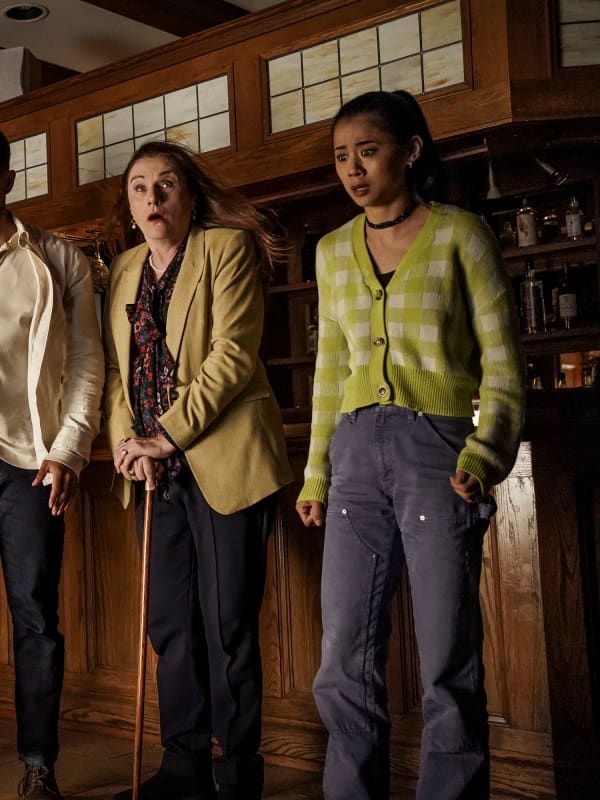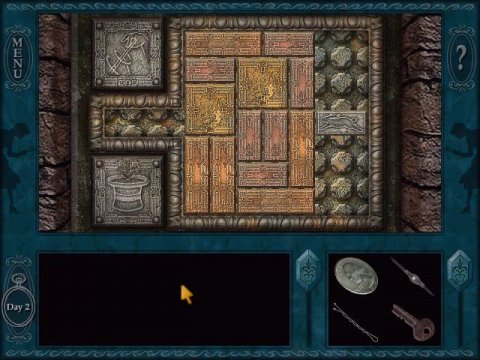

- #Nancy drew the final scene ending serial
- #Nancy drew the final scene ending trial
- #Nancy drew the final scene ending series
ABC’s new take on The Wonder Years isn’t just trying to capitalize on Boomer and/or Gen-X nostalgia, it balances universal coming of age tropes with stories that are specific to the experiences of Black Americans in the 1960s that the original series often ignored. They don’t really have anything new to say, nor do they provide us with any further understanding of the characters or stories we once loved, seemingly content to simply rehash that which has come before.īut every so often a reboot or remake comes along that genuinely surprises you. Everything old really is new again, and to be honest, it’s kind of exhausting.īecause the problem with many (most?) of these remakes, reboots, and revivals is that, as a rule, they’re merely trying to capitalize on the known quantity of it all without actually doing much in the way of exploring, interrogating, or otherwise reinventing the things the original property (be it a show, a book, or something else) set out to do. Gossip Girl is terrifying a new generation at Constance Billiard over on HBO Max, teen horror staple I Know What You Did Last Summer is getting reinvented as an Amazon Video limited series, and updates on familiar titles like The Fresh Prince of Bel-Air, Clueless, and Cruel Intentions are all in the works. It’s the reason we’re getting more Dexter, even though the original series had one of the absolute worst endings of any television show ever made. It’s why Sex and the City is, somehow, inexplicably returning to our screens nearly two decades after it first ended. Besides popularizing it, perhaps the Jewett case set a precedent for true crime-that often it commemorates victims less for the lives they lived, and more for the way they ended.Known quantities are all the rage in our current television landscape. Newspapers inserted Jewett’s biography, Mad-Libs style, into the template of: “gentle-mannered girl,” kicked out of a good home, falls into vice. Yet in all this talk, there was very little about the victim. When Robinson was acquitted in June 1836, the public and even the papers, “usually so servile to the expressed opinion of twelve numbskulls,” voiced their outrage. As one pamphlet put it, the nation was united in an “inherent, morbid love of the horrible.” And now, they had the media to support it. Some publications like the Evening Post even apologized to readers for reporting such a “disgusting” and “disagreeable” case, claiming “public excitement” had made it necessary.

#Nancy drew the final scene ending trial
Now, major papers had to report the trial to stay relevant, and they reluctantly competed with the penny papers’ Jewett scoops. The crowd at Robinson’s trial was a verifiable “deluge,” swelling against the walls and forcing some spectators to hang onto window moldings to stay afloat. But the Jewett case was a whole other beast. Six-cent papers like the New York Times and the Evening Post frowned upon crime reporting and stuck to financial and political coverage instead.

Since about the eighteenth century, cases like Jewett’s had been reported in penny papers and crime pamphlets (long sensationalized narratives)-more than 420 of which are housed in the Harvard Law School Library’s Studies in Scarlet collection.

This “most horrid tragedy that ever froze the blood” was one of America’s first true-crime obsessions, setting the stage for crime media as we know it. According to one contemporary pamphlet, the case was “the subject of moral elucidation and horror in every family, in the taverns, on the side-walks, and at the wharves” across the nation, long before televisions or even telephones. The prime suspect? “Upstanding” 19-year-old shop clerk and Jewett’s secret lover, Richard P. In April 1836, Jewett-a 23-year-old prostitute in New York City-was found axed in bed, her mattress lit on fire. Simpson murder trial forever changed the way Americans thought of ill-fitting gloves-all the nation could talk about was Helen Jewett and her burning mattress.
#Nancy drew the final scene ending serial
Before Netflix-watchers debated whether Carole Baskin fed her husband to tigers in the docuseries Tiger King, before Serial podcast sleuths investigated the murder of Hae Min Lee, and before the televised O.J.


 0 kommentar(er)
0 kommentar(er)
